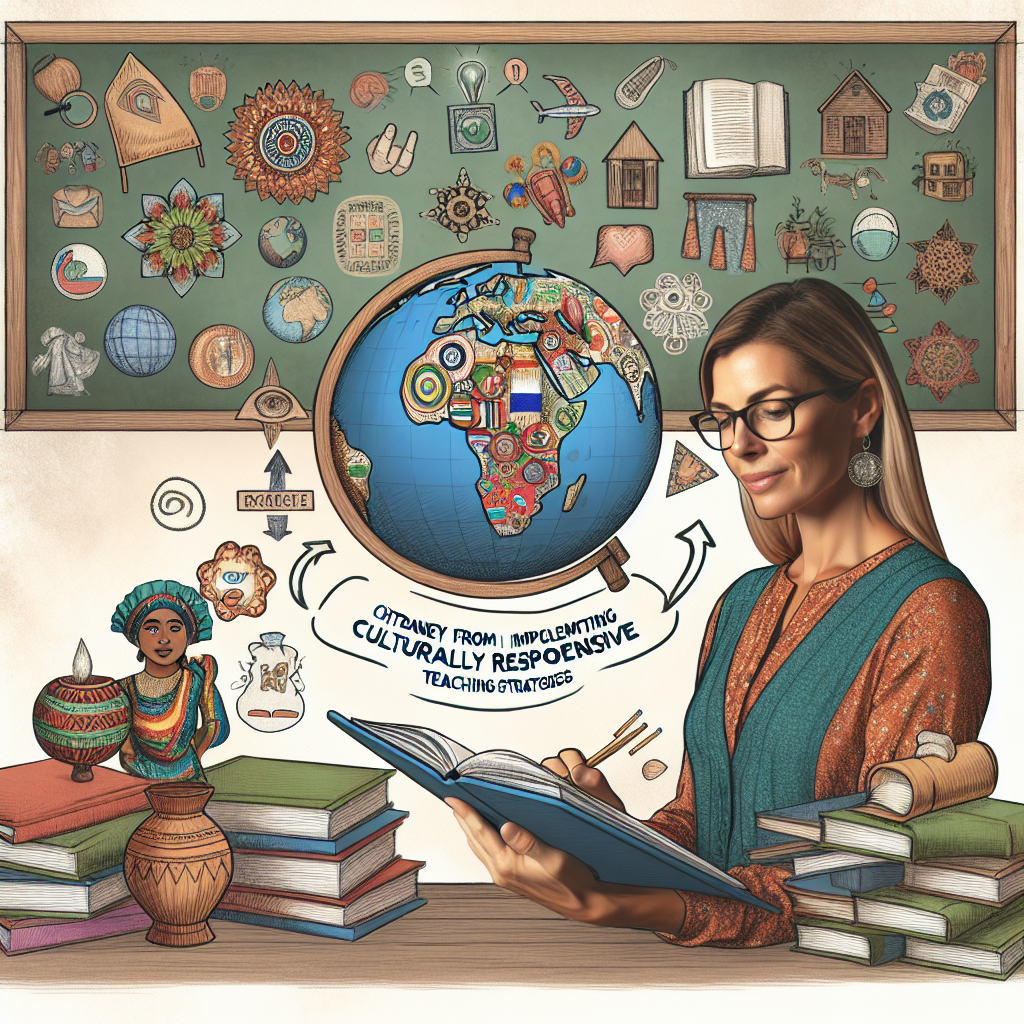Introduction: The Importance of Culturally Responsive Teaching
In the ever-diversifying world of education, culturally responsive teaching (CRT) has become more than just an educational buzzword—it is a necessity. With classrooms representing an array of cultures, languages, and backgrounds, educators face the challenge of meeting diverse needs while ensuring that all students feel valued and engaged. So, how do we move from theory to practice when it comes to implementing culturally responsive teaching strategies? This article will explore effective methods to do just that, drawing upon successful case studies to illuminate real-world applications and outcomes.
Understanding Culturally Responsive Teaching
Culturally responsive teaching is an educational framework that seeks to empower students by recognizing and validating their cultural identities. The goal is to foster an inclusive, supportive learning environment that improves student engagement and academic success.
Key Principles of Culturally Responsive Teaching
- Validation of Cultural Identity: Recognizing and respecting students’ cultural backgrounds.
- High Expectations: Holding all students to high standards to promote achievement.
- Active Engagement: Using culturally relevant materials that resonate with students’ experiences.
Moving From Theory to Practice
Building a Culturally Responsive Curriculum
Creating a Relevant Curriculum: A curriculum grounded in CRT should incorporate texts, examples, and materials that reflect the cultural backgrounds of the students. For example, if students come from a predominantly Hispanic background, including literature from Latin American authors can enhance engagement.
Case Study: The Multicultural Curriculum at Riverside High School
At Riverside High School in California, educators adopted a multicultural curriculum that included literature from diverse cultures. According to a study conducted by Dr. Anna Lopez, student engagement scores increased by 45% within one academic year. This case illustrates the importance of diversifying curriculum materials to reflect student demographics.
Professional Development for Educators
Training and Workshops: Regular professional development is essential for teachers to learn effective CRT strategies. Workshops should focus on cultural awareness, bias training, and teaching strategies tailored to diverse learners.
Case Study: Teacher Training Initiative in New York City
The New York City Department of Education launched a professional development initiative aimed at incorporating CRT into the teaching methods of over 1,000 educators. As a result, classrooms reported a 30% increase in positive student-teacher interactions. This initiative serves as a potent example of how targeted training can facilitate effective implementation.
Engaging Families and Communities
Creating Partnerships: Culturally responsive teaching is not confined to the four walls of the classroom. Engaging families and communities is crucial for fostering an inclusive environment. Schools can host cultural nights, where families share their traditions, foods, and stories.
Case Study: Family Night at Maplewood Elementary
Maplewood Elementary School organized a "Cultural Family Night," inviting families to showcase their heritage. The event not only strengthened community bonds but also transformed parent participation rates, rising from 20% to 80%.
Incorporating Technology
Using Digital Platforms: With technology playing a growing role in education, utilizing online platforms that support culturally responsive teaching is essential. Tools like Google Classroom or culturally relevant educational apps can offer diverse learning experiences.
Case Study: Educational Technology in Action at Oak Ridge Academy
At Oak Ridge Academy, teachers integrated educational technology that adapted to students’ cultural backgrounds. They reported significant gains in academic performance and engagement, particularly among English Language Learners (ELL). This integration underscores the power of technology in facilitating cultural responsiveness.
Assessment Strategies
Culturally Relevant Assessment: Assessment methods should be fair and reflective of diverse learners’ strengths. Traditional testing may not measure the true capabilities of students from different cultural backgrounds. Incorporating varied assessment methods—like portfolios, presentations, and projects—can yield a more accurate picture of student learning.
Table: Types of Assessments for Diverse Learners
| Assessment Type | Description | Cultural Relevance |
|---|---|---|
| Portfolios | Collection of student work over time | Reflective of individual experiences |
| Group Projects | Collaborative work focusing on cultural themes | Promotes teamwork and diversity |
| Presentations | Students present on cultural topics | Encourages sharing knowledge |
Creating an Inclusive Classroom Environment
Physical Arrangement
The classroom layout should encourage collaboration and inclusivity. Arrange seating in clusters rather than rows to promote group work and interaction.
Culturally Relevant Classroom Decor
Displaying art, posters, and resources that represent various cultures can affirm students’ identities. This can include maps, flags, quotes from diverse leaders, and student work.
Evaluating Outcomes
Gathering Data to Measure Success: Using surveys, interviews, and formal assessments, educators should evaluate the efficacy of culturally responsive strategies. Feedback from students can provide invaluable insights into their experiences.
Conclusion: The Way Forward
Transitioning from theory to practice in culturally responsive teaching is a journey, not a destination. By creating inclusive curricula, engaging with families, utilizing technology, and employing varied assessment strategies, educators can truly cater to the needs of every student. As we embrace diversity, let us aim not just to teach subjects, but to cultivate understanding, respect, and unity among all students.
FAQs
-
What is culturally responsive teaching?
- Culturally responsive teaching is an educational framework that acknowledges and integrates students’ cultural backgrounds into the learning process.
-
Why is culturally responsive teaching important?
- It helps create an inclusive environment where all students feel valued, which can improve engagement and academic performance.
-
How can teachers implement culturally responsive strategies?
- By diversifying curricula, engaging families, providing professional training, and adjusting assessment methods to reflect students’ cultural realities.
-
Can technology support culturally responsive teaching?
- Yes, technology can provide diverse learning materials and facilitate cultural awareness through various online platforms and resources.
- What are some examples of culturally responsive assessment methods?
- Portfolios, group projects, and presentations that focus on cultural themes can provide a more holistic understanding of student learning.
Incorporating these strategies ensures that education becomes a source of empowerment, fostering an environment that celebrates the richness of diversity. Educators, families, and communities must collaborate to build a supportive and inclusive educational landscape.

